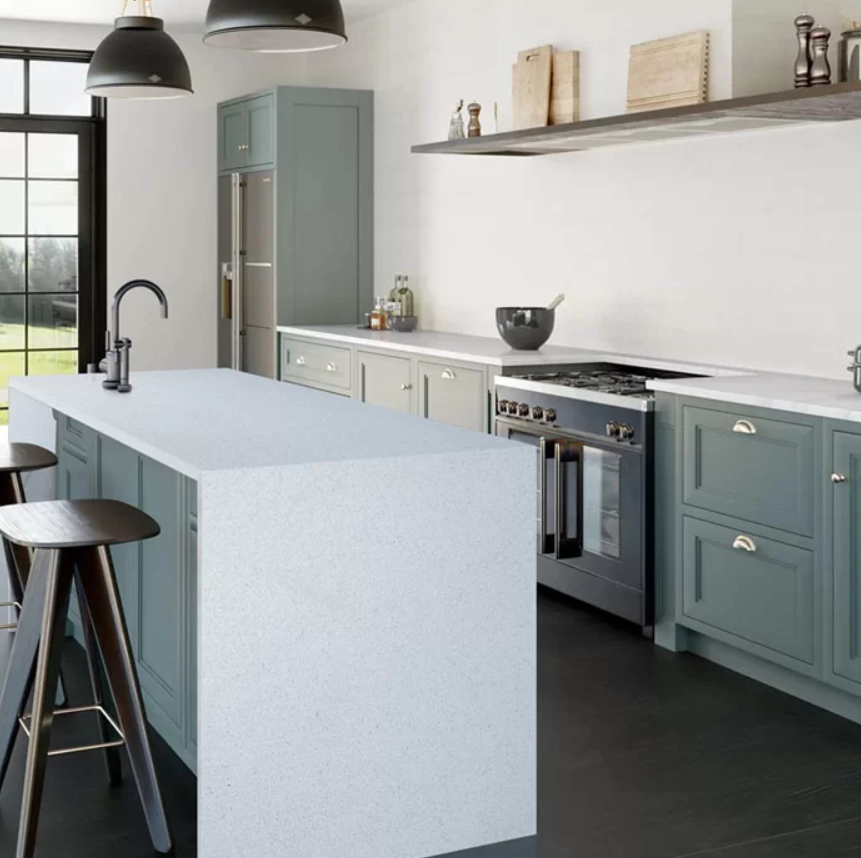- May 17, 2024
- 0
- Quartz
From Quarry to Kitchen The Journey of Quartz Countertops

The intriguing process of quartz countertop production blends human innovation and the beauty of nature, from the quarry to the kitchen. There are multiple steps in this process, all of which go into making the gorgeous and long-lasting countertops that adorn contemporary kitchens and bathrooms. An in-depth look at the manufacturing process of quartz countertops.
Quartz Extraction
The process of taking raw quartz out of quarries is the first step in the trip. One of the most common minerals on Earth, quartz can be found in a variety of geological formations. enormous chunks of quartz are extracted from the earth by miners, who frequently use enormous machinery to transport and break up the raw material. After that, these blocks are delivered to processing centers, where they are converted into countertop material that may be used.
Crushing and Grinding
The big quartz blocks are broken up into smaller pieces in the processing facility. The basic material is being refined starting with this step. After that, the crushed quartz is ground into tiny particles to give it a consistency similar to sand. The quartz particles must be homogeneous in size for the following steps of the manufacturing process, which is ensured by this grinding procedure.
Mixing with Resins and Pigments
To get the right color and pattern, resins and pigments are combined with powdered quartz particles. Natural quartz usually makes up 90–95% of the mixture, with polymer resins and colors making up the remaining 5–10%. The pigments give the quartz particles color, and the resins serve as a binding agent to keep the particles together. From traditional shades of white and gray to strikingly bright colors, this mixture can be adjusted to produce a broad spectrum of patterns and colors.
Molding and Compression
When the combination of quartz, resin, and pigment is finished, slabs are formed by pouring it into molds. Standard countertop sizes can be produced by using these molds. The combination is then compressed using a technique known as vibro compression, which involves applying high pressure and heat. This procedure makes sure that the resin binds the quartz particles uniformly, compacts the mixture, and eliminates any air bubbles. A robust, dense slab that is prepared for additional processing is the end product.
Curing and Cooling
The slabs are cured in large ovens to solidify the resin and complete the bonding process after compression. In order to cure the resin and improve the strength and durability of the slabs, this curing stage requires heating the slabs to high temperatures. The slabs are given time to cool after curing in order to attain the ideal levels of stability and hardness.
Polishing and Finishing
After cooling, the slabs are polished to give them a shiny, smooth surface. To attain the required gloss, this polishing method entails multiple grinding stages using progressively finer abrasives. The polishing procedure is modified to suit the preferences of people who want a matte or sharpened appearance. Apart from polishing, the slabs’ edges can be cut and finished to fit particular design specifications, such beveled, ogee, or bullnose edges.
Fabrication and Installation
The fabrication and installation phase of the quartz countertop journey is the last one. The slabs are precisely cut by fabricators to fit the customer’s kitchen or bathroom measurements. In this technique, apertures for faucets, sinks, and other fixtures are cut. After that, the assembled countertops are sent to the installation location, where knowledgeable installers position and fasten them with care. After sealing the seams, any last tweaks are made to guarantee a perfect fit.
